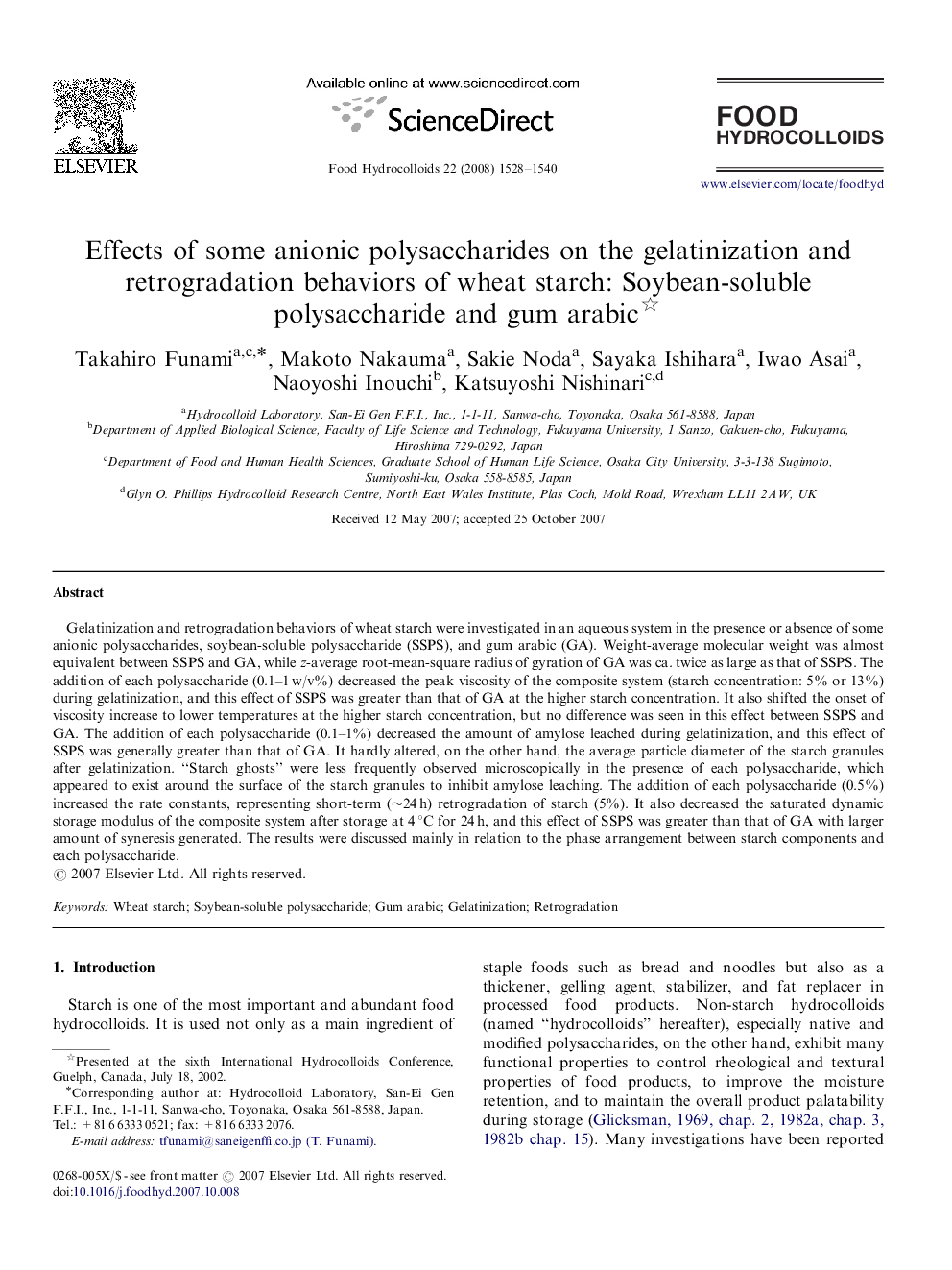| Article ID | Journal | Published Year | Pages | File Type |
|---|---|---|---|---|
| 605775 | Food Hydrocolloids | 2008 | 13 Pages |
Gelatinization and retrogradation behaviors of wheat starch were investigated in an aqueous system in the presence or absence of some anionic polysaccharides, soybean-soluble polysaccharide (SSPS), and gum arabic (GA). Weight-average molecular weight was almost equivalent between SSPS and GA, while z-average root-mean-square radius of gyration of GA was ca. twice as large as that of SSPS. The addition of each polysaccharide (0.1–1 w/v%) decreased the peak viscosity of the composite system (starch concentration: 5% or 13%) during gelatinization, and this effect of SSPS was greater than that of GA at the higher starch concentration. It also shifted the onset of viscosity increase to lower temperatures at the higher starch concentration, but no difference was seen in this effect between SSPS and GA. The addition of each polysaccharide (0.1–1%) decreased the amount of amylose leached during gelatinization, and this effect of SSPS was generally greater than that of GA. It hardly altered, on the other hand, the average particle diameter of the starch granules after gelatinization. “Starch ghosts” were less frequently observed microscopically in the presence of each polysaccharide, which appeared to exist around the surface of the starch granules to inhibit amylose leaching. The addition of each polysaccharide (0.5%) increased the rate constants, representing short-term (∼24 h) retrogradation of starch (5%). It also decreased the saturated dynamic storage modulus of the composite system after storage at 4 °C for 24 h, and this effect of SSPS was greater than that of GA with larger amount of syneresis generated. The results were discussed mainly in relation to the phase arrangement between starch components and each polysaccharide.
